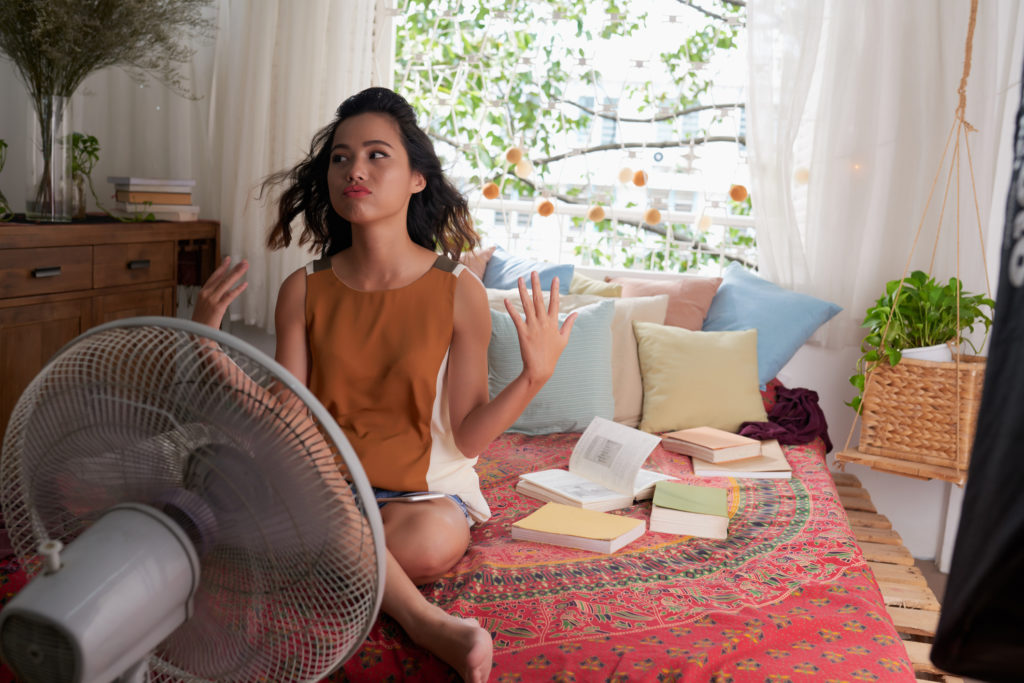
Articles
SleepScore at the ATN Innovation Summit 2025: Why Sleep Drives Everything
Reimagining The World of Sleep SleepScore Labs was proud to take part in the ATN Innovation Summit 2025, an elite gathering…
Introducing SleepScore
We deliver accurate data, actionable insights, personalized coaching and proven outcomes your customers need.
Sleep Insights
Last Published on 27th May 2025 by SleepScore Labs

Much of the world is facing record-breaking heat this summer, and we understand how tough it can be to fall and stay asleep amid these hot conditions!
Did you know that the average bedroom temperature of our users in July and August is around 75°F? While this is likely still a bit cooler than the outdoor temperature, it is actually far above the recommended 60–68°F bedroom temperature range for sleep.

What’s more, SleepScore data shows that when our users sleep in a room at 65°F or lower, they sleep about 17 minutes longer than those who sleep in a room at 75°F or higher. And the warmer it gets, the more that sleep is impacted.
It’s well known that temperatures that are too warm or too cool can have a strong impact on sleep, and that bedroom temperatures peak in the summertime. When your bedroom is cool, you’ll set yourself up for a better night’s sleep. But if you can’t get your room cool due to energy costs or lack of AC, we’ve compiled some handy hacks to cool off.
If you’re one of the many feeling sweaty and uncomfortable at night, these hacks are for you!
Many of us don’t have the luxury of central air in our homes. But these handy tricks can help keep you cool so your Zzzs come with ease:
Experts suggest between 60 and 68 degrees Fahrenheit as the best temperature for sleep. This allows your body to stay cool and enter all the sleep stages easily. But we understand if this is tough to achieve due to high energy costs. If your neighborhood is cool enough in the evening, try opening your house up at night to let in the fresh air. Then close it up first thing in the morning! This might help keep everything cooler for a little longer.
Managing sleep during long summer days and warm nights doesn’t have to be a struggle. With the free SleepScore app, you can track how light and temperature affect your sleep quality and get personalized, science-backed recommendations to improve your rest.
Whether it’s helping you adjust your bedtime routine, recommending ways to cool your sleep space, or giving you nightly sleep scores and trends, SleepScore is your summer sleep companion.
Download the free SleepScore app from the App Store and make every night—no matter how bright or hot—a restful one.
Do you have your own summertime sleep tricks? Let us know on Twitter @sleepscore!
SleepScore Labs. (n.d.). Best Lighting For Sleep: Best Night Light Temperatures. Retrieved from https://www.sleep.ai/blog/light-temperature-and-a-good-nights-sleep/SleepScore
Cleveland Clinic. (n.d.). What’s the Best Temperature for Sleep?. Retrieved from https://health.clevelandclinic.org/what-is-the-ideal-sleeping-temperature-for-my-bedroomCleveland Clinic
Sleep Foundation. (n.d.). The Best Temperature for Sleep. Retrieved from https://www.sleepfoundation.org/bedroom-environment/best-temperature-for-sleepSleep Foundation
Obradovich, N., Migliorini, R., Mednick, S. C., & Fowler, J. H. (2020). Nighttime temperature and human sleep loss in a changing climate. Sleep. Retrieved from https://academic.oup.com/sleep/article/43/Supplement_1/A464/5847198
National Sleep Foundation. (2025). Sleep in America Poll. Retrieved from https://www.thensf.org/wp-content/uploads/2025/03/NSF_SIA_2025-Report_final.pdfNational Sleep Foundation